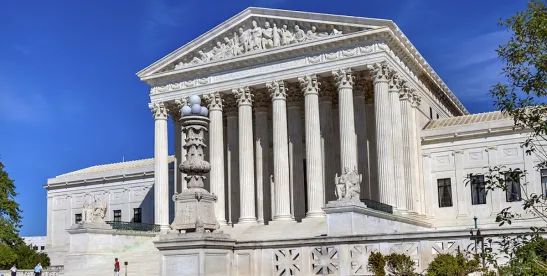Under the Copyright Act, “there is no time limit on monetary recovery” for a timely claim. So held the Supreme Court last week in Warner Chappell Music, Inc. v. Nealy.
Section 507 of the Copyright Act imposes a three-year statute of limitations: “No civil action shall be maintained … unless it is commenced within three years after the claim accrued.” But under the so-called “discovery rule” recognized in at least 11 federal circuits, a claim may accrue years, even decades, after an infringement occurs. Under that rule, a claim accrues — and starts the clock on the three-year limitations period — when the plaintiff discovers or should have discovered the infringement. In contrast, under the “injury rule,” a claim accrues when the infringing act occurred, regardless of when the plaintiff learned of it. In Nealy, the plaintiff had filed suit in 2018 based on infringements dating back to 2008 of which he was allegedly unaware. Under the discovery rule, the claim was timely, but the district court held the plaintiff had no claim for damages dating back more than three years.
In doing so, the district court relied on a Second Circuit decision — Sohm v. Scholastic Inc., 959 F.3d 39 (2d Cir. 2020) — holding “that even when claims for old infringements are timely, monetary relief is ‘limited’ to ‘the three years prior to the filing.’” But the Eleventh Circuit reversed, joining the Ninth Circuit in reasoning the Sohm rule “would gut the discovery rule by eliminating any meaningful relief.”
Writing for the majority, Justice Kagan agreed. Focusing on the text of the statute, she found “no separate three-year period for recovering damages,” describing the “Second Circuit’s contrary view” as having “no textual support” and “essentially self-defeating.”
But the Court explicitly avoided the underlying question: should the discovery rule apply in the first place? Because the question was not part of the Court’s grant of certiorari, the Court assumed “without deciding” the discovery rule applied, noting it has “never decided whether that assumption is valid — i.e., whether a copyright claim accrues when a plaintiff discovers or should have discovered an infringement, rather than when the infringement happened.”
Justice Gorsuch dissented, joined by Justices Thomas and Alito. While Gorsuch did not disagree with the Court’s application of the Copyright Act’s text, he disagreed with the decision to sidestep the antecedent question of whether the discovery rule applies. Gorsuch made clear his view that the Act “almost certainly does not tolerate a discovery rule.” Rather than assume that the discovery rule applied and “expound on the details of a rule of law” that “very likely does not exist,” Gorsuch would not have heard the case at all, waiting instead until the issue was properly raised to “answer a question that does matter [rather] than one that almost certainly does not.”
He may not have to wait long. A petition for certiorari directed towards the discovery rule is currently pending, asking: “Whether the ‘discovery rule’ applies to the Copyright Act’s statute of limitations for civil claims [under] 17 U.S.C. 507(b)?” Hearst Newspapers, L.L.C. v. Martinelli, No. 23-474 (Nov. 2, 2023). It needs only four votes to be accepted. Three justices have already stated a belief that the discovery rule does not apply. The remaining six have reserved judgment.
But for now, the discovery rule lives, and copyright plaintiffs with a timely claim, no matter when it arose, face no temporal limitation on available damages.




 />i
/>i

